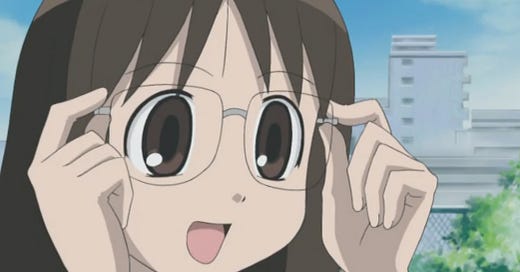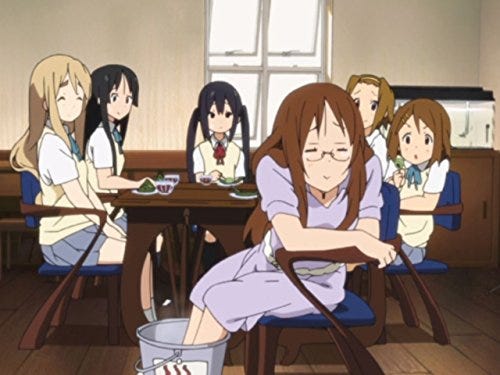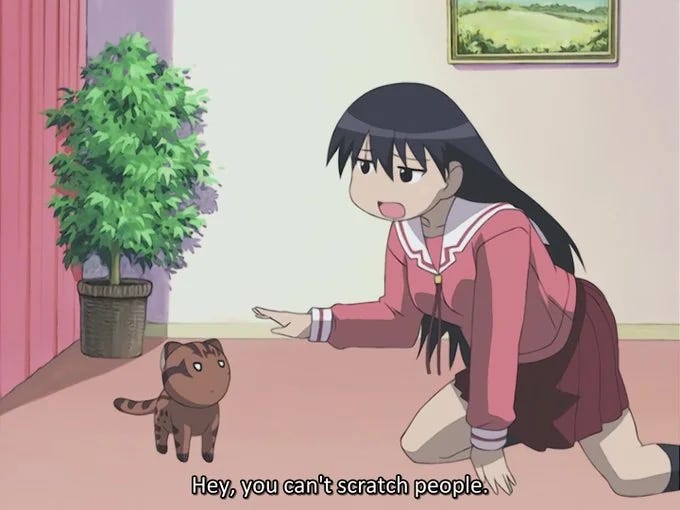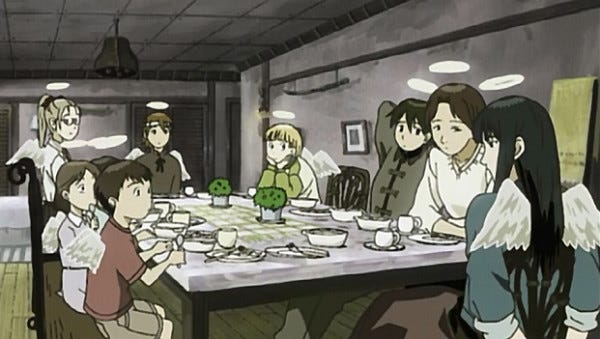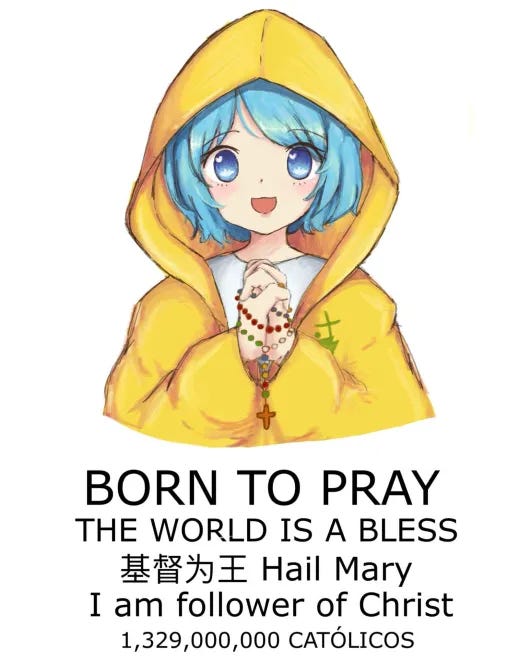Alas that art is so long and life so short, cries Wagner in Goethe's Faust, but I've often felt the opposite: a good book lasts you a couple weeks, music or films are gone in a matter of hours or minutes, many paintings and drawings can be surveyed in a matter of minutes, and then you are left with the naked hours. Sometimes it seems very difficult to fill the seventy some years of life, not least when it is so exhausting trying to achieve anything meaningful in this entropic world. In light of such an odious and often tedious plane of being, we have a universal need for distractions. I am particularly inclined to these: trying to read every post ever made to X.com, learning compulsively the lore of the Beach Boys, watching with a discerning eye youtube documentaries about tetris. If I am not careful I fall into such slumps of six or eight hours, wasted evenings, lost weekends. Indeed idle watching of Youtube is one of the worst diseases known to man, & future ages will perhaps look back on us with smug derision, enjoying the fruits of their anti-slop vaccine and draconian East Asian-esque laws they have to protect society against such degeneration of the brain's relationship with dopamine. I, being of our times, am not so lucky, and decided recently to consolidate all idle, distracted behaviors away from the manifold of cyber-toxins into a single well of entertainment: anime.
I think perhaps the favorite anime I've watched after employing (to incredible success) this strategy has been Azumanga Daioh; I like certain action or thriller animes, but in general I favor what one might call Pastoral Anime -- encompassing CGDCT (Cute Girls Doing Cute Things), Slice of Life, Moe, what have you. While most anime has a je ne sais quoi about it that cannot be found anywhere else, this particular genre is perhaps home to some of the most exotic emotions I've ever felt, which are very difficult to quantify. I think this mystical appeal is why it's difficult to analyse exactly why this genre has managed to find popularity, given that very little tends to happen in it, its aesthetics tend to be lackluster, and it seems directed at no audience whatosever.
Some may say that it has a sexual appeal to certain sickos, and this is probably (and unfortunately) true, but I personally find that this variety of anime is perhaps the furthest thing removed from the sexuality, and indeed practically all other components, of our ante-diluvian hellscape of a world. Much of internet culture tend to police those who disseminate erotic drawings of the characters, decrying that they are “not for sex”. Others tend to say that these animes have a political appeal, as through a glass darkly, in that they depict an utopian society devoid of any & all major problems, which certain maniacs take to be a world without globalism, miscegnation, or whatever else wignats are concerned with. I think you could, with high fidelity, also mirror this argument to the other end of the horse-shoe, and say that the abundance of anime communists on the net are drawn to these Pastoral Animes because they depict a world freed of capitalist oppression and class struggle, where human expression is allowed with perfect freedom. I think neither the /pol/tard nor the tumblrite are right about this (a very common situation), but approach does touch on something profound: namely, the utopian aspect of these shows, where we are shewn a world so serene & edenic that it is, in effect, entirely other than our own, security camera footage from an alternate dimension.
I think K-On (along with its surreal and schizoid twins, Nichijou & Girls Last Tour respectively) encapsulates this genre best, but Azumanga Daioh was, I'm told, the first real attempt at this genre, which didn't find mainstream success until the after-shock effects of the gnostic classic, The Melancholy of Haruhi Suzumiya. For the most part, Azumanga is just a depiction of daily life, most episodes featuring two or three small story arcs that depict, uneventfully, common school-life activities (this intensely picaresque mood can be explained by its origins in comic strips). The closest things to proper plots are things like Sakaki's struggle to befriend cats or the running sub-thread of the young teachers' doubts about their romantic life. When these plots centralised, the usually comic texture of the show takes modulates into a more poetic atmosphere: in keeping with traditional Japanese aesthetics, the emotive consequences (the teachers grappling with their odious reputation among men, Sakaki feeling sad about rejection via cats & later happy when she acquires a kitten) are treated with total ellipticality, bringing the characters to a point of clarity and neglecting to show any proper reflection, hystrionics, or any confrontation whatsoever, preferring instead to present the scenario & leave it to the audience to appreciate its resolution. The Japanese haiku functions in the same manner, offering two contrasting images & leaving the reader to reconcile them; as epitomized by Kawabata, the Japanese modernist novel operates by exactly the same manner. In an episode, Sakaki makes several attempts to befriend a local cat, who bites her every time, and then spends the afternoon with her friends having a delightful time before passing by the cat on her way home, at whom she stares pensively before it bites her. No conclusion is wraught, nor does Sakaki reflect, but a contrast between the two halves of the episode are presented before the reader in an uncertain, incomplete cadence.
This is typical of Japan, and that even an anime about schoolgirls employs this technique is hardly surprising; what it does distinctly do in the case of anime, however, is set a limit to the dreamlike world in which these characters reside. Whereas the elliptical climaxes and endings of Ozu films are careful depictions of what the viewer understands as a real human drama, for Yukari-sensei (one of the teachers) there is no human drama whatsoever, as it is inconceivable to imagine her life continuing beyond the limits of an episode, and these poetic moments are the closest thing to our crueller ontology that her character can approach. In a sense, anime girls are like the souls in Dante's afterlife, stripped of certain physical and mental capacities that we have on earth (eg, the souls in Paradiso are stripped of their free will, whereas the souls in Inferno are stripped of their divine spark, such that neither the saved nor the damned can ever change their state) but, in the case of these anime girls, it seems almost a blessing. Whatever else may be said about the over-arching ontology of the anime world (something I think is not entirely well understood by anyone alive, to my awareness), the limits of that world protect the denizens thereof from evils and cruelties of our world that I don't think anyone would wish upon their blessed innocence. Perhaps this particularly pure spirit is why they are metempsychotically allotted an existence as anime girls in the first place.
Certainly the tradition of Japanese art is well acquainted with the notion of the world's harshness. While the Japanese have a reputation for being spritely and orderly people possessed of good natures, their capacity for wartime cruelty and other viciousnesses certainly validate something Lafcadio Hearn said somewhere about this culture, that the calm veneer of Japanese society is a facade permitted exactly by all parties' mutual awareness of the latent violence resting in their souls. This mild paradox is the main theme of Japanese art and can be traced, it seems, at least a century back to Lady Murasaki's The Tale of Genji, which depicts the perfectly ceremonious life of Japanese aristocracy and the intensely painful & often cruel love affairs that perpetuate its bloodlines. Many characters who seem noble and magnanimous turn into sociopathic machines bent on rape when in love, whereas the most pure-hearted characters are repeatedly embarassed by their inability to compete in a climate of such cut-throat erotics. At no point in this novel's eleven-hundred pages does a character manage to resolve any affair entirely happily (most frequently it ends in decades of misery in an unhappy marriage or life defined by heartbreak), nor does even its titular protagonist ever manage to sate his libido, continuing to attempt seductions long after his reputation and youthful demeanour have been degraded to the point where no woman will accept him. There is no happy ending in love for the Japanese, only a brief flash of beauty encasing the sado-masochism at the heart of the soul. In Japanese, beauty and sadness are understood to be synonyms. The only way the characters in Genji find anything resembling peace is by renouncing the world and retiring to a monastery to study the Buddhist classics as most of the characters in the novel end up doing. For the Japanese Buddhist, there is no redemption for the lustful or cruel, and the only thing to do is hit the books and hope that the next life will be kinder. Most Japanese books and films make or imply this same argument, as is clear once you know to look for it.
So perhaps this is a clue as to the nature of the anime world: if you study hard enough, perhaps you will be reincarnated into Non Non Biyori. To be clearer, consider Haibane Renmei -- it is a moe-like anime about angels living in an enclosed town, appearing and disappearing according to mysterious patterns of transcendance unknown to the characters and left unexplained by the show. While the anime resolves in a rather disappointing way (the characters have something resembling a group therapy session to help overcome their traumas), it features perhaps the most thickly oneiric settings of all anime, where personalities and emotions are stripped to their most abstract, and all plots and concepts are so fleeting as to seem little more than dream logic, immune to interpretation, hinting at a lore more subterranean than could possibly be delivered upon. The point of the show, of course, is that the characters died an unhappy fate, and that their existence as angels is a sort of purification entr'acte between their past life and whatever comes next: it seems to be in line with Zen Buddhism, but the show also uses enough Christian symbology as to sustain a Purgatory interpretation. Perhaps there is no difference, and the transcendance from Mount Purgatory to the pearly gates of Heaven is the same as the final metempsychotic leap from a pure life to nirvana; perhaps anime is the last stage between these, or perhaps anime is merely heaven itself. This is not only justified, but entirely made possible by, the special aesthetic atmosphere of anime and its strange, unexplored world which embodies the salvation of the soul, or else perfectly mirrors it.
Is it weird to be entertained by the redemption of souls? Society seems to have partitioned the serious and the trivial, whereby only Youtube should count as entertainment and anime, as I have characterized it, should constitute as study or 'serious engagement'. I don't think that's quite accurate, and my contention is that anime is so radiantly metaphysical that even passive, thoughtless watching is deeply profound, so elusively so that it seems comical to countenance anime as one would a fine painting or book. Perhaps this unexpected grey zone is what the higher echelons of the Vatican had in mind when they recently announced their new mascot for 2024, an anime girl by the name of Luce. While they simply, to my awareness, unveiled the character design and showed her to the public, the internet reception to this seems to confirm this affinity between anime and salvation: countless 'memes' have been created, depicting Luce in a wide variety of anime-esque, cartoonish scenarios, but without any tendency towards vulgarisation (or whatever else). I have no profound insight or theory about this character, but it seemed a natural conclusion to this essay, which I had begun the night before Luce was unveiled and who appeared, as though an angel from the midst of the clouds, smiling upon my foolish talkings.
